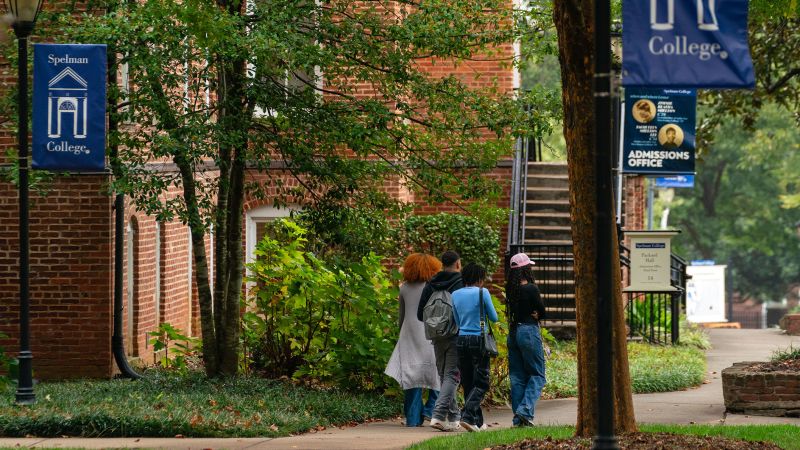Millions of student loan borrowers are facing uncertainty as the Supreme Court has upheld a block on President Joe Biden’s student loan repayment plan known as SAVE (Saving on a Valuable Education). The plan will remain on hold until the 8th US Circuit Court of Appeals makes a ruling on its legality, a process that could take weeks or longer. The Biden administration has prioritized reducing student loan debt, with the SAVE plan being a significant policy change following the Supreme Court striking down a separate student loan forgiveness program last summer. SAVE promised lower monthly payments and quicker loan forgiveness for around 8 million enrolled borrowers.
Due to the ongoing legal battle, the Department of Education has suspended payments for all borrowers participating in the SAVE plan, leading to confusion among borrowers about their future repayment obligations. It is unclear whether the court’s block on the plan also affects debt relief under other student loan repayment programs. The situation has been further complicated by the impending end of a pandemic-era freeze on defaulted student debt collections on October 1, adding to the uncertainty faced by borrowers during this time of legal turmoil.
The legal battle over the SAVE plan began earlier this year when Republican-led states filed lawsuits challenging its legality. Borrowers now have to wait for the 8th Circuit Court to make a ruling on the states’ case before they can determine the future of their student loan payments. The majority of active judges on the appeals court were appointed by Republican presidents, underscoring the potential challenges that borrowers may face in the legal battle ahead. Uncertainty looms over the fate of millions of borrowers caught up in the complex legal dispute.
Currently, the 8 million borrowers enrolled in SAVE are in an interest-free forbearance period during which they are not required to make monthly payments. The plan promised reduced monthly payments compared to other repayment options and offered the possibility of loan forgiveness after as little as 10 years of payments. While the payment pause is beneficial for many borrowers, it could delay student loan forgiveness for some, as the forbearance period may not count towards qualifying payments under programs like Public Service Loan Forgiveness, which requires 120 qualifying payments for debt relief.
The temporary block on the SAVE plan has also affected the processing of applications for other income-driven repayment plans by student loan servicers. The Department of Education has warned of delays in processing applications, potentially leaving recent college graduates with higher monthly payments than they would have under income-driven plans. The situation could impact around 2.6 million borrowers in plans like PAYE and ICR, potentially hindering their path to loan forgiveness. The government has raised concerns about the broader implications of the court’s block on debt relief available through other income-driven repayment plans.
In conclusion, the legal battle over President Biden’s student loan repayment plan, SAVE, has left millions of borrowers in limbo as they await a ruling from the 8th Circuit Court of Appeals. The uncertainty surrounding the fate of student loan repayment plans and forgiveness programs has cast a shadow over borrowers who are grappling with the impending end of a freeze on defaulted student debt collections. While the postponement of payments may provide temporary relief for some borrowers, challenges remain for those seeking long-term debt relief through income-driven repayment plans. The complex legal landscape surrounding student loan debt adds another layer of uncertainty to the financial future of millions of borrowers.


